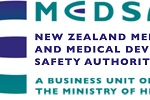
Table of Contents
Medical Device Registration in the US
Background for medical device registration in the US
The Federal Food, Drug, and Cosmetic Act (FD&C Act)—as amended by the Medical Device Amendments of 1976, the Safe Medical Devices Act of 1990 (SMDA), and the Food and Drug Administration Modernization Act (FDAMA)— used for regulating medical devices.
Devices that were in commercial distribution before May 28, 1976, when the Medical Device Amendments was signed into law, and have not been significantly changed or modified since then are considered pre-amendment devices. Pre-amendment devices are also devices for which a regulation requiring a premarket approval (PMA) application has not been published by the FDA. Devices meeting these criteria have been “grandfathered” in and do not require a 510(k); they must have the same intended use as the device marketed before the regulation.
Medical Device Classification
Medical devices are divided into 3 classes by intended use and indications for use, as defined in section 513 of the FD&C Act. The classes are described as follows:
• Class I: Low-risk devices for which general controls are sufficient to provide a reasonable assurance of safety and effectiveness.
• Class II: Moderate-risk devices that require both general and special controls to provide a reasonable assurance of safety and effectiveness.
• Class III: High-risk devices for which insufficient information exists to determine that general and special controls are sufficient to provide reasonable assurance of the safety and effectiveness.
Class I devices are exempt from the 510(k) submittal process and can be marketed without a premarket submission. Class II devices use special controls that are typically device specific when general controls alone are insufficient to provide reasonable assurance of the device’s safety and effectiveness. Examples of special controls include:
• Performance standards;
• Post-market surveillance;
• Patient registries;
• Professional guidelines; and
• Other appropriate action deemed necessary for mitigating the risks of the device.
Class III devices are considered life sustaining or supporting, are implanted, or present potential risk of illness or injury and require a PMA. The pathway for PMAs is outlined in section 515 of the FDA Reauthorization Act of 2017 (FDARA), and 21 CFR 814 governs the PMA process.
When the FDA classifies a device, it also considers the following items, as described in 21 CFR 860.7(b):
• The individuals the device is intended for;
• The conditions of use, including those prescribed, recommended, or suggested in the labelling or advertising, as well as other intended conditions of use;
• The likely health benefit from using the device weighed against any probable injury or illness from that use; and
• The reliability of the device.




